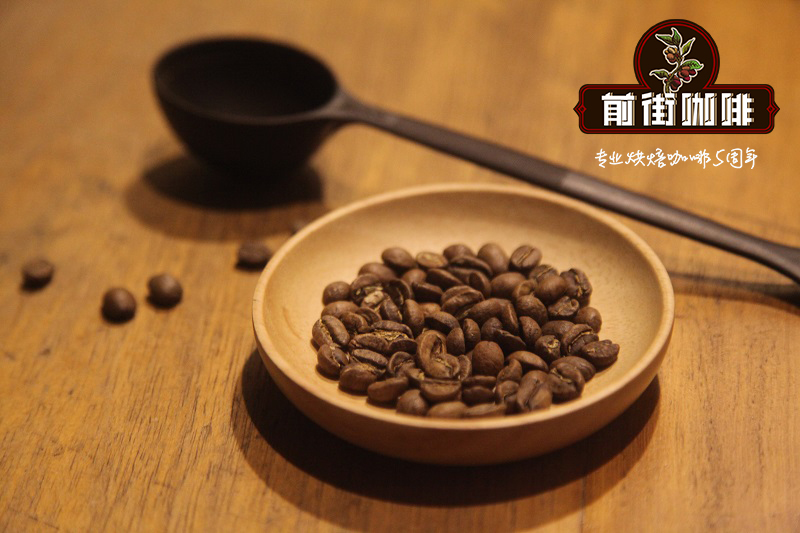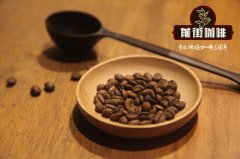The dispute between different levels of flavor in the coffee bean producing areas of Honduras in Central America

Professional coffee knowledge exchange more coffee bean information please follow the coffee workshop (Wechat official account cafe_style)
Front Street-Coffee producing area of Honduras
The terrain of Honduras is complex and the climate is diversified. Located in the coastal plain of Central America, it has a tropical rain forest climate, with an average annual temperature of 31 ℃. The mountain belongs to subtropical forest climate, the annual average temperature is 23 ℃, the rainy season is from June to November, the temperature is mild and the rainfall is abundant, so it is an ideal place for coffee growth.
The granules of coffee beans in Honduras are large in shape, uniform in size and glossy in color. Honduran coffee has a rich and mellow taste, taste is not astringent, not sour, mellow and aroma are very high, quite personality. Marcala SHG SCAA scores range from 82 to 83, with excellent acidity, texture and sweetness. SHG,SCAA scores between 79 and 81, with solid acidity, body and sweetness, potential flavors are citrus, bitter chocolate, caramel, sugar cane and silky; HG, low acidity, good health, medium sweetness.
In Honduras, coffee-producing areas are divided into six major areas, spread to the west and south, namely Santa Barbara (Santa Barbara), El Paraiso (El Paraiso), Copan (Copan), La Paz (La Paz) and Comayagua (Olan Mound), with an average planting height of more than 1100 meters above sea level. Coffee varieties are Arabica, 69% are HG "High and low Coffee", 12% are SHG "Special Highland Coffee" and 19% are CS. There are mainly Typic, Bourbon, Caturra, Villa Sarch and Lempira.
So there are two kinds of very good quality coffee produced in Honduras, one is the "Highland Coffee" grown at an altitude of 1000 to 1500 meters, and the other is the "selected Highland Coffee", which represents the highest level in Honduras, growing at an altitude of 1500 to 2000 meters. Most of them are exported to the United States and Germany.
Although there are no distinct characteristics of Honduran coffee, its biggest feature is its rich and balanced taste as a whole. In detail, it has a medium or shallow acidity, which is obvious but not strong. Sometimes with a slight floral or fruity aroma (generally speaking, different producing areas, different elevations of beans have different flavor performance) slightly bitter and obvious sweet.
The overall taste of Honduras is balanced, sour and bitter are not strong, and the balance between the two is better. Therefore, the extremely balanced nature of Honduran coffee makes it widely used. Can be used to mix coffee, can also be used as a single product to brew, with Honduran coffee mixed with Italian concentration will have a more admirable flavor display.
In short: Qianjie is a coffee research hall, happy to share the knowledge about coffee with you, we share unreservedly just to make more friends fall in love with coffee, and there will be three low-discount coffee activities every month. The reason is that Qianjie wants to make more friends drink the best coffee at the lowest price, which has been Qianjie's tenet for 6 years!
END
Important Notice :
前街咖啡 FrontStreet Coffee has moved to new addredd:
FrontStreet Coffee Address: 315,Donghua East Road,GuangZhou
Tel:020 38364473
- Prev

Honduras coffee flavor characteristics Honduras litchi orchid coffee how to rush to have litchi flavor
Professional coffee knowledge exchange More coffee bean information Please pay attention to coffee workshop (Weixin Official Accounts cafe_style) Front Street-Honduras litchi orchid now fire litchi orchid, using brandy barrel fermentation, coffee beans smell obvious litchi aroma, taste also added a layer of fermented wine feeling. This floral, fruity coffee bean broadens the coffee like a different kind
- Next

The grading system of coffee beans in Honduras introduces the distinct flavor of washed beans in Honduras.
Professional Coffee knowledge Exchange more information about coffee beans Please follow the front street of Coffee Workshop (official Wechat account cafe_style)-Coffee grading Hongguo of Honduras began to grow coffee in the late 19th century. Unlike some countries, which are widely planted at home after being introduced from other countries, Honduras has a large domestic planting volume, 90% of which is consumed at home.
Related
- Beginners will see the "Coffee pull flower" guide!
- What is the difference between ice blog purified milk and ordinary milk coffee?
- Why is the Philippines the largest producer of crops in Liberia?
- For coffee extraction, should the fine powder be retained?
- How does extracted espresso fill pressed powder? How much strength does it take to press the powder?
- How to make jasmine cold extract coffee? Is the jasmine + latte good?
- Will this little toy really make the coffee taste better? How does Lily Drip affect coffee extraction?
- Will the action of slapping the filter cup also affect coffee extraction?
- What's the difference between powder-to-water ratio and powder-to-liquid ratio?
- What is the Ethiopian local species? What does it have to do with Heirloom native species?

